
Solana (SOL) Price Forecast: This Token Will 42x Your $500 While SOL Lags
The post Solana (SOL) Price Forecast: This Token Will 42x Your $500 While SOL Lags appeared first on Coinpedia Fintech News Recently, Solana’s price slipped below the $130 support level, worrying a good share of investors and market observers alike. This drop comes against massive […]
Sponsored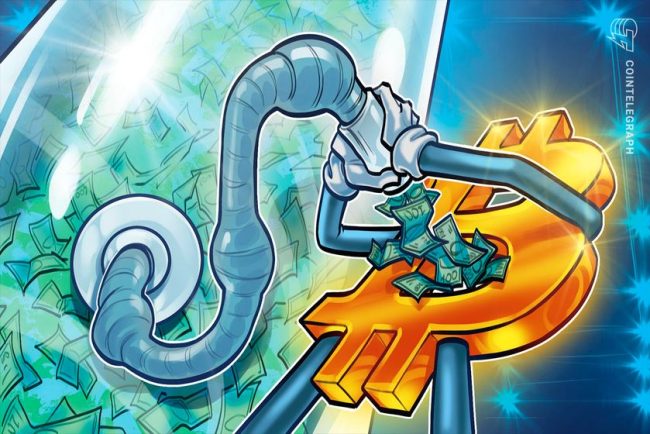
Bitcoin enters world's top 5 largest assets, surpassing Google, Silver, Amazon
Bitcoin (BTC) has overtaken Alphabet (Google) to become the world’s fifth most valuable asset by market capitalization. As of April 23, Bitcoin’s market cap surged to $1.87 trillion, edging past Alphabet’s $1.859 trillion valuation, according to asset ranking data. BTC is now behind only gold, […]
Analysis
Heads Up: This Week Is Packed With Economic News and Altcoin Catalysts – Here Are the Top 5 Coins to Track Hour by Hour
The post Heads Up: This Week Is Packed With Economic News and Altcoin Catalysts – Here Are the Top 5 Coins to Track Hour by Hour appeared first on Coinpedia Fintech News This week holds significant events that could shake up the cryptocurrency market. Major […]
Sponsored


Crypto Pro Who 500x’d on PEPE Says This Coin Is the Next Big Thing—And It’s Launching Now!
The post Crypto Pro Who 500x’d on PEPE Says This Coin Is the Next Big Thing—And It’s Launching Now! appeared first on Coinpedia Fintech News A seasoned crypto expert, renowned for turning a remarkable profit on PEPE, now points to the next coin with explosive […]
Sponsored
The post Crypto Pro Who 500x’d on PEPE Says This Coin Is the Next Big Thing—And It’s Launching Now! appeared first on Coinpedia Fintech News
A seasoned crypto expert, renowned for turning a remarkable profit on PEPE, now points to the next coin with explosive potential. This intriguing project, codename: Pepe crypto, sets itself apart as a stark contrast to the pretenders in the market.
With the crypto market witnessing a flourishing period, readers are eager to uncover the opportunities Codename: Pepe crypto presents. This coin promises a unique blend of humor and high returns, making it one to watch closely.
Codename:Pepe Unleashes True Intelligence for Maximum Profits
The crypto underworld is infested with fake AI agents—shady operators promising “next-gen intelligence” while barely outsmarting a toaster. This nonsense ends today.
Codename:Pepe has come to denounce fake AI agents. This ultimate undercover agent does not pretend, it is actually doing something useful: helping you make money in the chaotic meme coin jungle. Codename:Pepe is on a mission of mass hilarity (and, naturally, ridiculous gains).
Classified Intel: The True Identity of Codename:Pepe
Keep this under wraps: Codename:Pepe is a Pepe in disguise. Modeled after the legendary PEPE coin, which skyrocketed nearly 22,000%, this covert operative has the same ambition. Will it succeed? That depends on its community.
Your Directive: Secure Your Position in the Codename:Pepe Mission
Unlike VC-backed rug pulls, Codename:Pepe is powered by the people. The bigger the support, the higher it moonwalks. That’s why it has chosen the community-driven presale strategy with a smart plan:
Entry Price at Stage One: $0.003333333 (because three is a lucky number)
Final Stage Price: $0.151515152 (because round numbers are boring)
First-Stage Discount: 98% Translation: Buy early, pay less.
Codename:Pepe Mission Explained
Codename:Pepe plans to use the power of artificial intelligence to hunt down the juiciest meme coins, predict market trends, and deliver exclusive AI-powered trading signals before the FOMO kicks in.
Beyond smart analysis, this genius agent will also trade for you with its fully automated AI-trader, turning those signals into sweet gains.
Every great agent needs an elite organization backing them. That’s where $AGNT comes in. Holding $AGNT unlocks membership in a top-secret DAO, where operatives (investors) gain access to classified strategies, insider analytics, and the ability to vote on high-stakes missions. Holding $AGNT will unlock:
- Membership in a top-secret DAO
- Access to classified strategies
- Insider analytics
- Ability to vote on high-stakes missions
Profits from the mutual DAO fund will be allocated to those who stake their $AGNT, ensuring the spoils of the trade go to the most loyal agents.
Top-Secret Tokenomics (No Funny Business)
This is a community-first operation, so 25% the total token supply is allocated for staking and rewards.
Codename:Pepe isn’t just throwing tokens around like confetti. The supply is capped at 5 billion, ensuring no surprise inflation bombs.
Further breaking down the tokemonics, only 20% of the supply is allocated for the presale. The offer at a discounted price is limited.
Final Orders: Deploy Capital & Secure Your $AGNT Now
This is your shot to join crypto’s most ridiculous yet lucrative mission. The best entries go to the fastest trigger fingers. Don’t be the guy who “wished he got in early.”
The mission is set. The presale is live. Are you in, or will you let the AI fakes win?
Buy Codename:Pepe ($AGNT) Early for a Bigger Discount
Pepe Cryptocurrency Overview
Pepe is a cryptocurrency inspired by the viral meme of Pepe the Frog, created by Matt Furie in the early 2000s. This digital currency is a meme coin using Ethereum’s ERC-20 standard. It’s designed to be simple and transparent, with a strong community focus. The project’s development is divided into three phases: Meme, Vibe and HODL, and Meme Takeover. Pepe does not aim for lofty promises but instead keeps things fun and straightforward, staying true to its meme origins.
Currently, Pepe is one of the top meme coins, with significant competition from Dogecoin and Shiba Inu. Its market position is notable, ranking within the top 30 cryptocurrencies by market capitalization. However, its price can be volatile. Predictions vary widely regarding its future value, with some analysts suggesting potential growth while others anticipate challenges. Pepe’s market performance depends largely on continued community engagement and general market trends.
Conclusion
With the bull run in full swing, coins like PEPE may offer limited potential in the short term. Codename:Pepe crypto, however, stands out by unleashing true intelligence to maximize profits.
By employing advanced AI for market analysis and automated trading, Codename:Pepe crypto helps investors navigate the meme coin market. Its community-focused approach and capped supply make it a promising option. Early participation could secure a significant advantage in this innovative project.
Find out more about Codename:Pepe crypto here:
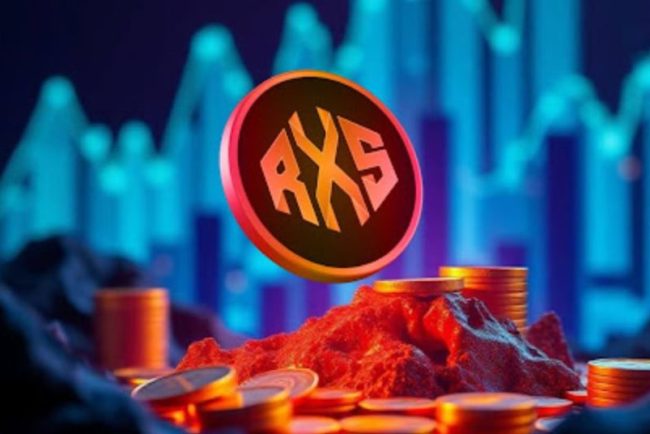
The 5 Most Talked-About Cryptos of Q1 2025, Are You Holding Them?
The post The 5 Most Talked-About Cryptos of Q1 2025, Are You Holding Them? appeared first on Coinpedia Fintech News Rexas Finance (RXS) has emerged as the leading topic in crypto circles in Q1 2025, overshadowing even long-established tokens. Its unique value proposition in real-world […]
Sponsored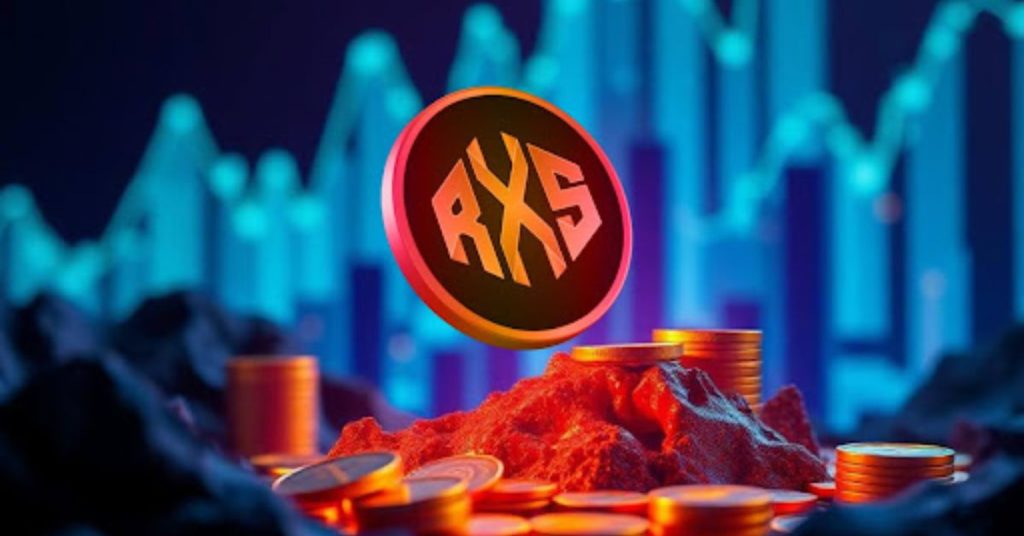
The post The 5 Most Talked-About Cryptos of Q1 2025, Are You Holding Them? appeared first on Coinpedia Fintech News
Rexas Finance (RXS) has emerged as the leading topic in crypto circles in Q1 2025, overshadowing even long-established tokens. Its unique value proposition in real-world asset (RWA) tokenization has gained substantial attention from both retail and institutional investors. With its presale nearly sold out and a significant listing price surge expected, Rexas leads the list of the five most talked-about cryptos this quarter.
Rexas Finance (RXS) Redefines Real-World Asset Tokenization
Rexas Finance enables users to tokenize assets like real estate, art, and commodities, giving global investors fractional access. This innovation sets it apart from speculative coins, as tangible assets and real utility back RXS. As a result, market participants are treating RXS as a credible long-term investment rather than a short-term trend. The presale phase has exceeded expectations, raising over $47 million and selling over 91% of the total allocation. The token’s price increased over sixfold from $0.03 to $0.20, and it is set to list at $0.25.
This growth and real-world use have intensified investor interest ahead of the June 19 launch. Rexas Finance also focused on building investor confidence through a full Certik audit, assuring users of its secure infrastructure. Community engagement remains strong, highlighted by a $1 million giveaway with over 1.65 million participants. With momentum building, experts consider Rexas the most promising crypto project of 2025, and adoption is expected to accelerate further.
Trust Wallet Token (TWT) Expands Utility Through Growing Ecosystem
Trust Wallet Token continues to grow steadily as it crosses 200 million downloads, making it one of the top self-custody wallets. TWT is trading at $0.9021, with minor gains in the past 24 hours and consistent trading activity. The platform’s decision to remove swap fees on the BNB Smart Chain has increased daily users. Based on current usage metrics, analysts forecast a potential April high of $1.548, indicating a possible 71.61% price surge.
However, May might bring a correction with the price averaging near $0.712, offering short-term trading opportunities. Still, rising demand for non-custodial wallets may drive steady long-term performance for TWT. While Trust Wallet shows steady growth, it lacks the innovation edge Rexas Finance brings with RWA tokenization.
Rexas’ tangible asset backing and rising presale numbers are drawing investor attention away from speculative utility tokens like TWT. As real-world use cases take center stage, Rexas continues gaining momentum in 2025.
Render (RNDR) Leads in Decentralized GPU Sharing for 3D Projects
Render offers a blockchain-based GPU marketplace, supporting artists and developers in rendering complex 3D designs affordably and efficiently. The platform enables GPU owners to rent out unused power, monetizing dormant resources while supporting creative industries. Demand for 3D rendering continues rising across gaming, entertainment, and virtual reality sectors. This increased need positions Render as a strong investment option, especially with traditional rendering proving costly and time-consuming.
Blockchain simplifies transactions and ensures transparency, making Render’s platform attractive for both GPU owners and digital creators. It stands out among niche projects but remains largely utility-based. Though Render has carved out a valuable niche, it still doesn’t match the scale of real-world impact seen in Rexas Finance. Rexas’ infrastructure allows real estate, commodities, and other hard assets to be tokenized and traded globally. This positions Rexas as a more comprehensive solution than sector-specific platforms like Render.
Tezos (XTZ)
Tezos continues to attract developers and enterprises due to its self-amending blockchain and focus on energy-efficient proof-of-stake consensus. The blockchain’s ability to upgrade without hard forks has allowed continuous innovation without disrupting the network. Furthermore, on-chain voting keeps the network decentralized and community-driven.
The protocol’s strategic partnerships with governments and institutions underline its long-term utility and potential for mainstream adoption. Its expanding ecosystem of dApps and NFTs also supports greater network activity and developer interest. However, growth has been gradual, and the project remains focused on infrastructure development.
Unlike Tezos, Rexas Finance presents a clear path to immediate utility by directly addressing traditional finance limitations. Its platform is already active in a multibillion-dollar RWA market, where asset tokenization is expected to scale rapidly. This gives Rexas an edge over infrastructure-focused platforms with slower adoption curves.
Toncoin (TON) Rebounds Amid Leadership Clarity and Growing User Base
Toncoin recently regained traction following the release of Telegram founder Pavel Durov from French custody after legal scrutiny. TON has regained investor trust with 3–5 million active wallets and monthly trading volumes approaching $700 million. Additionally, $1.4 billion worth of USDT issued on the network boosts its credibility. The TON blockchain continues growing within Telegram’s ecosystem, offering seamless integration with messaging services and financial tools. While still 25% down year-to-date, the token posted an 8.3% gain in the past week following favorable news. Investors are cautiously optimistic as legal hurdles appear resolved.
However, compared to TON, Rexas Finance is building from a more transparent and secure foundation with community-driven growth. Certified audits, successful presales, and real-world asset integration offer Rexas a stronger narrative for Q2 2025. Among all discussed projects, Rexas remains the most comprehensive and high-potential investment.
Website: https://rexas.com
Whitepaper: https://rexas.com/rexas-whitepaper.pdf
Twitter/X: https://x.com/rexasfinance
Telegram: https://t.me/rexasfinance
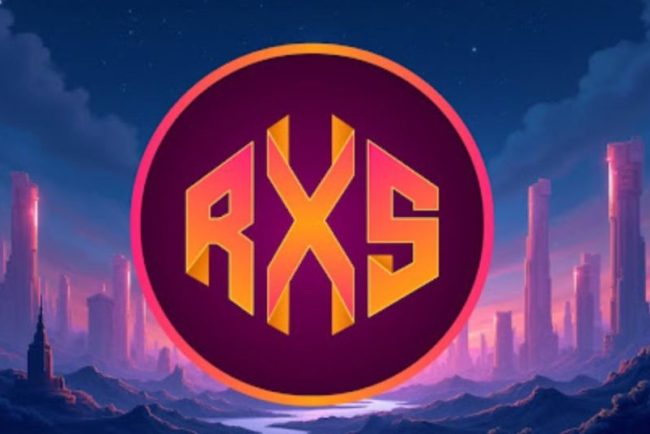
5 Best Altcoins to Buy Now: Top Cryptos to Invest in as They Gain Serious Traction in 2025
The post 5 Best Altcoins to Buy Now: Top Cryptos to Invest in as They Gain Serious Traction in 2025 appeared first on Coinpedia Fintech News Investors increasingly turn from speculative excitement to utility-driven initiatives as the crypto market develops and obtains mainstream acceptance. Strong […]
Sponsored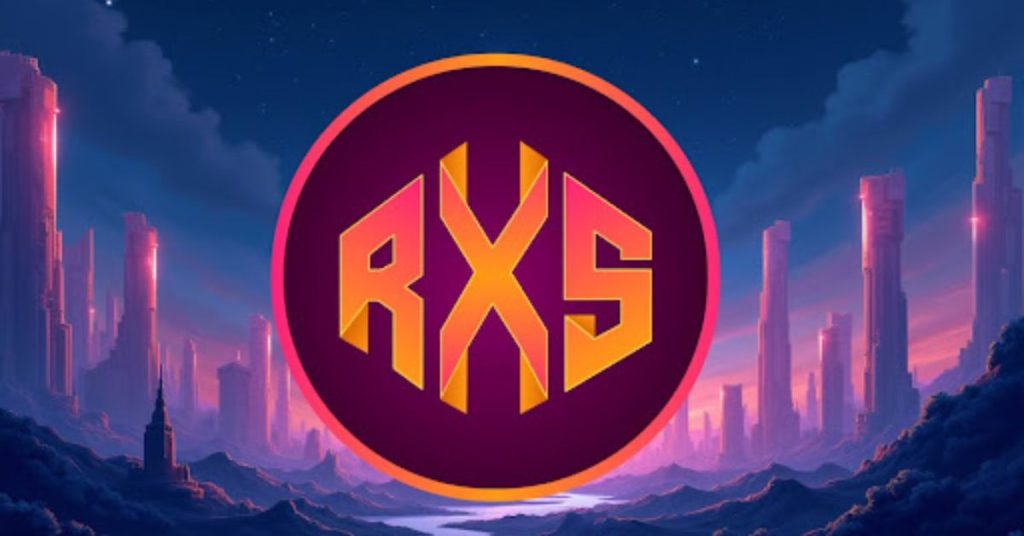
The post 5 Best Altcoins to Buy Now: Top Cryptos to Invest in as They Gain Serious Traction in 2025 appeared first on Coinpedia Fintech News
Investors increasingly turn from speculative excitement to utility-driven initiatives as the crypto market develops and obtains mainstream acceptance. Strong ecosystems and practical applications for cryptocurrency will drive the revolution in 2025. From well-known titans to fast-emerging young stars, these five cryptocurrencies are among the greatest ones you should consider including in your portfolio this year.
Rexas Finance (RXS)
Rexas Finance (RXS) is changing investor interaction with actual assets. Using blockchain-powered tokenization, RXS enables anyone to participate in high-value assets such as fine art, luxury vehicles, and real estate. For instance, a luxury hotel worth $10 million can be divided into fractionalized tokens, allowing normal investors—usually reserved for institutional buyers or the ultra-wealthy—to own a portion of that property. This creative approach offers a trillion-dollar RWA market for regular participants.
At the forefront of this financial revolution, Rexas Finance provides a flawless on-chain solution for trading, investing, and tokenized real-world asset management. One of the most often discussed altcoins in 2025 is RXS since it may link blockchain tech with conventional finance. The presale is 91.71% complete, with $47,709,220 raised and 458,543,810 tokens sold. From its starting $0.03 price, the token has jumped to $0.20, a 567% rise. With deflationary mechanisms and a capped total quantity of one billion tokens, value appreciation has great potential.
Beyond tokenization, Rexas provides staking, yield farming, a smart contract auditing tool, and a digital launchpad for startups, creating a complete DeFi ecosystem. On June 19, 2025, RXS will be listed on three crypto exchanges at $0.25. Once demand and liquidity flow in, analysts see a surge to $20. Given its creative engineering and practical application cases, Rexas Finance is an altcoin investors should not neglect.
Cardano (ADA)
Cardano is still one of the most technically sound blockchain systems, and big investors are noticing this once more. Whales have acquired 250 million ADA in a recent round of accumulation, exhibiting great conviction in ADA’s upside and valued at over $175 million. Currently trading around $0.73, Cardano is poised to move above $0.77, with short-term targets set at $0.88 and long-term projections reaching as high as $5.36. The larger driver is continuous conversations regarding US Crypto Treasury using the Cardano blockchain. If approved. It might drive ADA upward toward $10. Institutional talk over a possible ADA ETF is also intensifying, suggesting Cardano might be about to start its next significant expansion phase.

Ripple (XRP)
Ripple’s legal certainty after its SEC settlement has turned the market mood to XRP’s advantage. XRP exhibits fresh strength, trading at $2.35 following an 8% increase. One significant investor bought 6.7 million XRP on Upbit, increasing the whale accumulation. RippleNet is used for real-time cross-border transactions by more than 300 worldwide financial institutions, securing XRP’s position as a credible SWIFT rival. Since prediction markets point to probabilities at 80%, an XRP ETF approval looks increasingly likely. As more institutional players use Ripple’s technology, analysts predict that XRP may climb to $15. Given legal resolution, practical application, and rising institutional interest, XRP is a high-conviction choice.
Dogecoin (DOGE)
Dogecoin is once more showing its durability. Driven by increasing Bitcoin prices and fresh interest in meme currencies, it recently rose 10% in one week. Large holders recently acquired 120 million DOGE, which is swiftly generating momentum. At $0.19 now, experts predict a change to $0.7 by December. Should market conditions stay positive, DOGE may surpass all-time highs and reach $1 during a protracted surge. A strong community and media appeal help Dogecoin remain consistently on the altcoin radar.
Shiba Inu (SHIB)
Though Shiba Inu has had erratic price action, she is still a fierce competitor for a breakthrough performance in 2025. From a high of $0.00003343 in late 2024, SHIB presently trades around $0.00001438; nonetheless, technical patterns point to a significant bullish breakout perhaps just around. A symmetric triangle formation points to a possible 17x gain—a surge to $0.00023. The SHIB Army is still expanding, and work inside the ecosystem—including Shibarium and forthcoming NFT utilities—adds actual use cases outside the meme story. SHIB is one to watch for explosive movement.
Conclusion
From trailblazing real-world asset tokenization to increasing blockchain use and leveraging institutional markets, these five altcoins offer some of the most fascinating prospects in cryptocurrency this year. 2025’s altcoin scene has something for every kind of investor, whether you’re looking for fast growth, strong fundamentals, or creative utility.
For more information about Rexas Finance (RXS) visit the links below:
Website: https://rexas.com
Win $1 Million Giveaway: https://bit.ly/Rexas1M
Whitepaper: https://rexas.com/rexas-whitepaper.pdf
Twitter/X: https://x.com/rexasfinance
Telegram: https://t.me/rexasfinance

Memecoins Are Heating Up—Why Codename:Pepe and PEPE Might Outpace DOGE and SHIB This Cycle
The post Memecoins Are Heating Up—Why Codename:Pepe and PEPE Might Outpace DOGE and SHIB This Cycle appeared first on Coinpedia Fintech News Memecoins are capturing attention again, with fresh contenders emerging in the digital currency space. PEPE and a project called Codename:Pepe are rising as […]
Sponsored
The post Memecoins Are Heating Up—Why Codename:Pepe and PEPE Might Outpace DOGE and SHIB This Cycle appeared first on Coinpedia Fintech News
Memecoins are capturing attention again, with fresh contenders emerging in the digital currency space. PEPE and a project called Codename:Pepe are rising as strong competitors, drawing interest from crypto enthusiasts. This cycle presents an intriguing battle among these coins, potentially challenging the likes of DOGE and SHIB for the top spot.
Codename:Pepe stands out with its unique blend of artificial intelligence and community-driven empowerment. It uses smart technology to analyze market trends and generates exclusive trading signals, offering a new angle to investors. With buzz building, these memecoins could see significant growth, enticing both new and seasoned investors to join the movement.
Codename:Pepe Merges AI Functionality with Viral Meme Coin Appeal
Codename:Pepe is a new cryptocurrency project that combines AI-driven functionality with the viral appeal of meme coins, two of the most prominent trends today.
Interest in AI-driven crypto projects has skyrocketed, with blockchain-based AI solutions gaining more attention from investors. But not all AI tokens are created equal—many simply use “AI” as a marketing buzzword without offering real value.
Where Codename:Pepe Fits in the Crypto-AI Boom
In contrast, Codename:Pepe aims to blend AI innovation with blockchain utility, while also calling out projects that fail to live up to their AI claims. This approach helps Codename:Pepe stand out in an increasingly crowded space.
Codename:Pepe is designed to be an intelligent and adaptive platform. According to its developers, the project’s AI framework will be able to:
- Identify Emerging Meme Coins: By constantly monitoring social media and on-chain activity, Codename:Pepe spots early trends and high-potential tokens before they gain mainstream attention.
- Analyze Market Sentiment: AI-driven algorithms evaluate discussions, hype levels, and whale movements to determine which coins have the most momentum.
- Provide Actionable Trading Insights: Generates AI-backed forecasts, risk assessments, and early buy/sell signals to maximize trading efficiency.
- Optimize Auto-Trading Strategies: Uses real-time data to adjust automated trading strategies, ensuring adaptability in fast-moving market conditions.
The development team behind Codename:Pepe is focused on expanding both AI capabilities and blockchain integration, ensuring the technology evolves alongside the crypto market.
A Smart Presale Strategy for Early Investors
Codename:Pepe has decided to go with a community-driven presale model, giving early supporters access to the project at the best prices. The presale has a structured, multi-stage approach, designed to reward early adopters with big discounts:
At stage 1, the $AGNT token was offered at $0.003333333. It goes through 28 stages, and its price increases incrementally. Those who buy $AGNT earlier get a bigger discount.
Secure Your Codename:Pepe ($AGNT) Token Before the Next Price Increase
What Makes $AGNT a Compelling Investment Choice
Codename:Pepe combines two of the most attractive elements in today’s crypto market: AI-driven innovation and meme coin virality. The project’s focus on real AI capabilities and community-driven growth positions it as a standout among new crypto launches.
With a limited presale supply and increasing price tiers, $AGNT offers early investors the potential for significant returns as adoption grows.
The Codename:Pepe Community is Growing – Join the Mission Now!
Pepe Cryptocurrency Overview
Pepe is a cryptocurrency inspired by the viral meme of Pepe the Frog, created by Matt Furie in the early 2000s. This digital currency is a meme coin using Ethereum’s ERC-20 standard. It’s designed to be simple and transparent, with a strong community focus. The project’s development is divided into three phases: Meme, Vibe and HODL, and Meme Takeover. Pepe does not aim for lofty promises but instead keeps things fun and straightforward, staying true to its meme origins.
Currently, Pepe is one of the top meme coins, with significant competition from Dogecoin and Shiba Inu. Its market position is notable, ranking within the top 30 cryptocurrencies by market capitalization. However, its price can be volatile. Predictions vary widely regarding its future value, with some analysts suggesting potential growth while others anticipate challenges. Pepe’s market performance depends largely on continued community engagement and general market trends.
Dogecoin: An Accessible Cryptocurrency
Dogecoin is a digital currency that operates on a peer-to-peer network system. It was created in December 2013 by software engineers Billy Markus and Jackson Palmer. The coin features the Shiba Inu dog from the “Doge” meme as its logo. Originally intended as a light-hearted alternative to Bitcoin, Dogecoin promotes an informal approach to cryptocurrency. It is based on LuckyCoin, a branch of Litecoin, and utilizes the Scrypt algorithm for its mining process. Dogecoin has no fixed supply limit, allowing for the creation of unlimited coins. Transactions on the Dogecoin network process faster due to a shorter block time compared to Bitcoin.
Dogecoin gained significant attention, partly due to endorsements from celebrities like Elon Musk. It has participated in charitable ventures such as funding the Jamaican bobsled team for the 2014 Winter Olympics. The coin has experienced many fluctuations in value, influenced by social media and market trends. While it enjoys a dedicated user base, it competes with other cryptocurrencies like Litecoin and Shiba Inu. Future price predictions for Dogecoin vary, reflecting different market analyses and speculations.
Shiba Inu: Origins and Development
Shiba Inu, or SHIB, started in 2020 as a meme-inspired cryptocurrency, initially following in the footsteps of Dogecoin. Built on the Ethereum blockchain using the ERC-20 token standard, SHIB quickly gained attention, partly due to public figures like Vitalik Buterin and Elon Musk. Originally intended as a payment method, its growing popularity spurred the development of additional projects. The creators launched a decentralized exchange and an NFT project, contributing to SHIB’s expanded user base and differentiating it from other meme coins.
Future Prospects and Market Position
As of early 2024, SHIB has a market cap of approximately $14.53 billion and is traded around $0.0000247. Despite a significant drop from its all-time high in 2021, it remains stable and less volatile. The ecosystem’s expansion into realms like metaverse ventures, games, and merchandise has bolstered its infrastructure. While internal development is robust, future price shifts may depend on broader market trends, such as a potential crypto bull market. Reaching new price peaks would require substantial trading volume, though SHIB continues to be a focal point within the crypto community.
Conclusion
In conclusion, while PEPE, DOGE, and SHIB have made significant impacts in the meme coin space, their short-term potential appears limited in the current market cycle. Codename:Pepe crypto sets itself apart by using real artificial intelligence to navigate the volatile meme coin market. It offers AI-powered trading signals and an automated trading system designed to maximize profits through intelligent analysis.
Additionally, holding Codename:Pepe crypto provides access to an exclusive DAO, where members gain confidential strategies and influence key decisions. With a capped supply of 5 billion tokens and a focus on community involvement, it positions itself as a strong contender poised to outpace traditional meme coins. By prioritizing utility and community engagement, Codename:Pepe crypto offers promising prospects for investors seeking opportunities beyond standard meme coins.
Find out more about Codename:Pepe crypto here:

How to use a crypto hardware wallet: A step-by-step guide
TL;DR This guide shows you how to set up and use a crypto hardware wallet, using the Trezor Safe 3 as an example. You’ll learn to safely store Bitcoin, Ethereum and other assets offline, with clear steps for wallet setup, seed phrase backup, PIN protection […]
Analysis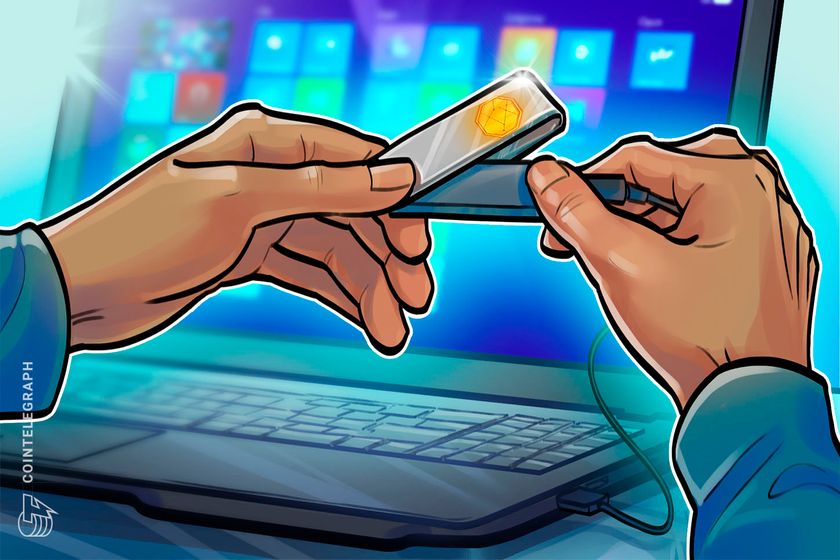

TL;DR
This guide shows you how to set up and use a crypto hardware wallet, using the Trezor Safe 3 as an example. You’ll learn to safely store Bitcoin, Ethereum and other assets offline, with clear steps for wallet setup, seed phrase backup, PIN protection and secure transaction signing. The article also explains how to connect your hardware wallet to MetaMask for use with DeFi platforms and NFTs – all while keeping your private keys offline. Whether you’re comparing the best hardware wallets in 2025 or need a crypto wallet tutorial for receiving and sending funds, this guide has you covered with actionable tips and best practices for long-term cold storage security.
If you’re ready to take crypto wallet security seriously, using a hardware wallet is one of the best steps you can take.
You may already be aware of its advantages over a software wallet: keeping your private keys offline, minimizing exposure to malware and giving you full ownership of your crypto assets. Maybe you’ve even picked out your device.
The good news? While there are several options out there, from Ledger to Trezor to newer multichain hardware wallets, the basic experience is similar. This hardware wallet setup guide will walk you through unboxing, verifying the device, securing your PIN and backing up your seed phrase.
For illustration purposes, this article uses the Trezor Safe 3, an ideal device for beginners but powerful enough for advanced users. It’s also a great choice if you want to use a hardware wallet for DeFi or connect your hardware wallet to MetaMask.
Let’s get into it.
Unboxing your crypto cold wallet
Before you begin setup, here’s what comes with a typical hardware wallet, in this case, the Trezor Safe 3. This applies to most of the best hardware wallets in 2025.
What’s in the box:
-
Trezor Safe 3 device with tamper-evident seal.
-
USB-C cable.
-
Two recovery seed cards (for your wallet backup).
-
Quick start guide.
-
Trezor stickers.
First steps: Inspect and verify
Before plugging anything in, check for:
-
Sealed, undamaged packaging.
-
Intact holographic sticker over the USB port.
This ensures your device hasn’t been tampered with, a crucial crypto wallet security tip. Newer devices (post-April 2024) have upgraded seals for added air-gapped security.
If anything looks suspicious, contact Trezor support.
Power it up
Peel the sticker and connect via USB — the Safe 3 powers on automatically, and no battery or power button is needed.
You’ll notice a small screen and two physical buttons. These are how you’ll confirm actions, approve transactions and manage your crypto.
Let’s begin the setup.
Hardware wallet setup: Trezor Safe 3
Getting started takes about 10–15 minutes. For this crypto hardware wallet tutorial, just have your computer ready and a pen handy. You’ll soon need to write down something very important.
Step 1: Download Trezor Suite
Go to the official Trezor site and download the Trezor Suite app. It’s available on Windows, macOS, Linux and via web browser.
Open it, plug in your device and follow the prompts. Click “Set up my Trezor.”
Step 2: Install firmware
Your device may not come with firmware pre-installed. Click “Install Firmware.” This is part of the crypto wallet recovery process and ensures a secure, clean slate.
Step 3: Verify device authenticity
Click “Let’s check your device” in Trezor Suite. Press the right button on your Safe 3 to authenticate. You’ll see a message confirming the device is verified.
Step 4: Quick tutorial
The device might walk you through button usage. Just follow along, it’s a one-time setup.
Step 5: Create a new wallet
You’ll see two options:
-
Create new wallet (choose this if it’s your first time).
-
Recover wallet (for restoring, using your seed phrase).
Step 6: Backup method
You’ll choose between:
-
Standard seed backup (easiest and most common).
-
Shamir backup (advanced; splits the seed into parts).
Stick with standard, unless you’re sure you know what you’re doing.
Step 7: Confirm on device
Use the buttons to confirm your backup method and agree to terms. Press “Create wallet” to proceed.
Step 8: Write down your recovery seed
This is the heart of your cold storage for crypto. The device will generate a random list of 12, 20 or 24 words, your recovery seed.
Trezor will remind you not to take photos or digital notes of the seed. Write it down on the provided card and store your crypto seed phrase safely. This is critical for future recovery.
Step 9: Confirm the seed
You’ll be tested on a few of the words (e.g., “What’s word #5?”). Select the correct ones using the buttons. Once confirmed, your backup is complete.
Pro tip: Make a second copy of your seed and store it in a different secure location. This adds an extra layer of protection.
Step 10: Set up a PIN
Now, create your hardware wallet PIN. In Trezor Suite, click “Set PIN.” The device will prompt you with a randomized layout. Use the buttons to choose your digits.
PINs can be up to 50 digits long. Choose something memorable, but not obvious. If forgotten, you’ll need to wipe the wallet and recover with the seed phrase.
Step 11: Enable coins and final setup
You’ll now choose which coins to enable, Bitcoin (BTC), Ether (ETH) and more. This step also prepares your wallet for use with DApps or storing Bitcoin in a hardware wallet.
After clicking “Complete Setup,” you can name your device or customize the home screen. Then hit “Access Suite” to open your dashboard.
If you’ve been following along on your own device, you’ve just completed your first hardware wallet setup and taken a major step toward storing crypto safely!
Receiving crypto with a hardware wallet
Once your device is set up, you’re ready to store crypto safely by receiving funds into your wallet. Here’s how to accept crypto securely with your Trezor hardware wallet.
1. Open the correct account
In Trezor Suite, choose the account for the crypto you want to receive (e.g., Bitcoin #1 or Ether #1). Click the “Receive” tab to generate a crypto cold wallet address.
2. Show and confirm the address
Click “Show full address” in the app. Your Trezor will display the full address on its screen. Always confirm the address on the hardware wallet itself, not just in your browser. This ensures it hasn’t been altered by malware on your computer (a standard crypto wallet security tip).
3. Use the address
Copy the address or scan the QR code to send crypto. Your Trezor doesn’t need to stay connected; the blockchain will receive the funds and update your balance next time you plug the wallet in.
Pro tips for safe receiving:
-
Confirm addresses on your device, not just your screen.
-
Use a fresh address each time for added privacy (Trezor Suite supports this).
-
If the address doesn’t match between your wallet and app, stop immediately.
Sending crypto from a hardware wallet
Sending crypto with a hardware wallet means your private key stays offline, even while broadcasting a transaction. Here’s how to do it securely:
1. Select the correct account
In the Trezor Suite, go to the account holding the asset you want to send. Click “Send.”
2. Fill in transaction details
Enter the recipient’s wallet address and the amount to send. You can also toggle to fiat view if needed. Double-check the recipient address to avoid mistakes.
3. Choose a Fee
-
For Bitcoin, you can select from fee levels: Low, Standard or High.
-
For Ether or ERC-20 tokens, Trezor Suite estimates gas fees automatically.
4. Confirm on the device
Click “Review & Send.” Your Trezor will display the transaction details:
-
Destination address.
-
Amount.
-
Network fee.
Only approve the transaction if everything checks out. This is how you protect yourself from clipboard malware.
5. Done, signed transaction is now sent!
Your signed transaction has now been sent, with zero exposure of your private key. You’ll see the confirmation in your history.
More pro tips:
-
If your Trezor asks to sign a transaction you didn’t initiate, cancel immediately.
-
Make sure your ETH balance is sufficient to cover gas for token transfers.
-
For advanced users: Trezor also supports air-gapped security setups using microSD backups.
Using a hardware wallet with MetaMask and DApps
Want to use your hardware wallet for DeFi or NFTs while keeping your keys secure? Trezor Safe 3 integrates seamlessly with MetaMask, making it easy to use DApps and sign transactions safely.
1. Connect Trezor to MetaMask
Open MetaMask in your browser. Click your account icon and choose “Connect Hardware Wallet.” Select Trezor when prompted.
2. Plug in your Trezor
If not already connected, plug in the device. MetaMask may prompt you to install Trezor Bridge, a utility that enables communication with the wallet.
You’ll be asked to approve the reading of your public key from the hardware wallet. This is safe and doesn’t reveal private keys.
3. Select a wallet address
MetaMask will list your Trezor-linked Ethereum addresses. Choose one (e.g., Ethereum #1) and click “Unlock.” The wallet will now appear in MetaMask, marked as a hardware wallet.
How it works
From now on, every time you make a transaction, whether it’s swapping tokens on Uniswap or minting an NFT, you will:
-
Initiate the transaction in MetaMask.
-
See the details appear on your Trezor screen.
-
Physically confirm the transaction using your device buttons.
This flow ensures that even if your browser is compromised, the final transaction approval happens on your trusted hardware wallet.
Final safety tip: Your hardware wallet screen is the most trustworthy place to verify transaction details. Never rely solely on what you see in the browser.
Why hardware wallets matter in 2025
Whether you’re storing Bitcoin, using DeFi protocols or exploring NFTs, hardware wallets remain the gold standard for crypto security. With cold storage for crypto, recovery tools like seed phrases and integration with platforms like MetaMask offer powerful protection with ease of use.
If the Trezor Safe 3 feels like a good fit, it’s available at a discount via the provided link, a smart first step into secure, self-custodied crypto.
Still weighing your options? Explore the updated 2025 guide to the best hardware wallets. It covers Ledger setup, Trezor guides, and more, including advanced models for multichain use, long-term backups and offline storage.
Disclaimer. Cointelegraph does not endorse any content or product on this page. While we have striven to provide all the essential information available in this article, please note that it contains affiliate links. Readers are encouraged to conduct their own research before making any decisions related to the company. This article should not be considered investment advice.

XRP: Why it’s outperforming altcoins — and what comes next
Over the past year, most altcoins have struggled to keep up with Bitcoin, but one project is breaking away from the pack: XRP. While other tokens have stagnated or slid, XRP (XRP) has surged more than 300% in just six months against Bitcoin (BTC) to […]
Analysis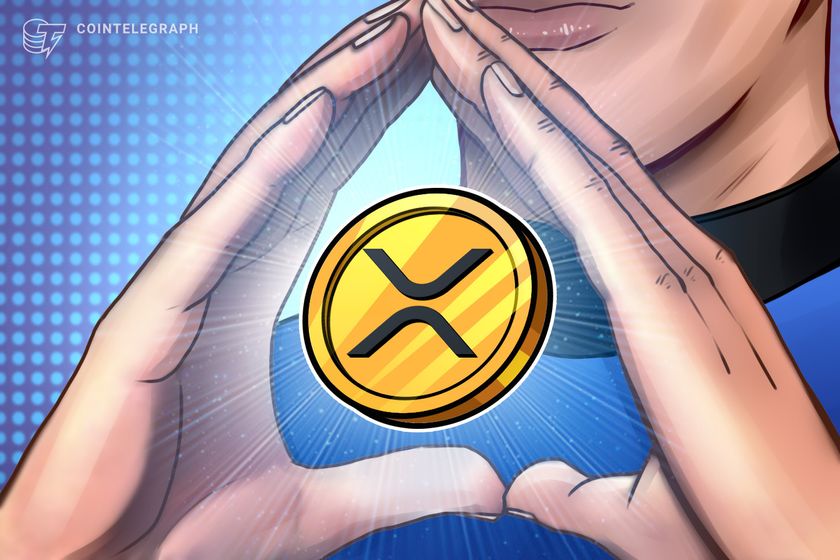

Over the past year, most altcoins have struggled to keep up with Bitcoin, but one project is breaking away from the pack: XRP.
While other tokens have stagnated or slid, XRP (XRP) has surged more than 300% in just six months against Bitcoin (BTC) to quickly become one of the best-performing assets in the crypto space. But what’s really behind this rally — and more importantly, can it last?
Some say it’s the fundamentals finally shining through. Others argue it’s just hype and speculation driven by a passionate community. Then there’s the legal, political, and institutional side of things — factors that could have a far greater impact on XRP’s trajectory than many realize.
In Cointelegraph’s latest video, we dive deep into the forces driving XRP’s recent performance, the growing institutional interest, and the potential game-changing developments on the horizon. From exchange-traded funds (ETFs) and stablecoins to regulation and Ripple Labs’ evolving strategy, this video breaks it all down.
Whether you’re an XRP holder, a skeptic, or just trying to make sense of the altcoin market in 2025, this is a video you don’t want to miss.
Check out the full breakdown on our YouTube channel — and make sure to subscribe for future updates.

What is a VTuber, and how do you become one in 2025?
Key takeaways A Vtuber is a real person behind a digital avatar, blending performance, storytelling, and creativity to connect with audiences through livestreams, games, podcasts, and more. Becoming a VTuber involves designing a unique avatar (2D or 3D), using motion capture for animation, and leveraging […]
Analysis

Key takeaways
-
A Vtuber is a real person behind a digital avatar, blending performance, storytelling, and creativity to connect with audiences through livestreams, games, podcasts, and more.
-
Becoming a VTuber involves designing a unique avatar (2D or 3D), using motion capture for animation, and leveraging software tools like Live2D, VSeeFace, and AI voice modifiers.
-
In 2025, VTubing success often starts with short-form mobile platforms like TikTok and YouTube Shorts. Cross-posting to Discord, X, or Twitch helps build community and drive monetization.
-
Aspiring VTubers should be aware of risks like burnout, privacy breaches, platform dependency, and unpredictable income.
A Vtuber is a real person behind a digital avatar, blending performance, storytelling, and creativity to connect with audiences through livestreams, games, podcasts, and more.
Becoming a VTuber involves designing a unique avatar (2D or 3D), using motion capture for animation, and leveraging software tools like Live2D, VSeeFace, and AI voice modifiers.
In 2025, VTubing success often starts with short-form mobile platforms like TikTok and YouTube Shorts. Cross-posting to Discord, X, or Twitch helps build community and drive monetization.
Aspiring VTubers should be aware of risks like burnout, privacy breaches, platform dependency, and unpredictable income.
Virtual YouTubers, or VTubers, have gained popularity in recent years. VTubers create content for their channels using computer-generated avatars.
Although VTubers are particularly popular in Japan and other Asian countries, the trend is slowly spreading across the world.
So, what exactly is a VTuber? How does VTubing work, and how can you become one in 2025?
This article explores what a VTuber is, the tools and software, and how to start VTubing in 2025.
What is a VTuber?
Have you ever scrolled Twitch or YouTube and stumbled upon a virtual anime-style character live streaming, playing games and chatting with viewers? That was a VTuber.
A VTuber is a digital content creator who uses a virtual avatar to produce videos or live content.
These avatars are often animated in real-time using motion tracking and face capture, creating an online personality. These avatars can look like anime characters, animals, robots or even abstract creatures.
However, behind every VTuber is a real person, using their voice, expressions and personality to bring the character to life.
But how does an avatar actually copy your movements?
Motion capture, or mocap, is the technology behind avatars that records a person’s movements using sensors to create realistic animations for virtual characters in games, movies or virtual reality. It converts real-world movement into digital 3D data for more lifelike animation.
Some VTubers are run by professional businesses or agencies, while others are single creators with their own background stories and hand-crafted avatars.
Whether they’re broadcasting games, selling merchandise, podcasting or just vibing with their audience, VTubers have established a space where technology meets creativity, and it’s growing day by day.
VTuber vs. traditional YouTube content creator
Aren’t VTubers just YouTubers with cool avatars? Well, not exactly. It all comes down to how they show up on screen. While traditional YouTubers appear as themselves, VTubers use animated avatars to represent their online persona, whether a space alien or a talking cat.
The core content and interaction with the audience might be similar. Still, VTubing often leans into storytelling, roleplay and unique esthetics to create a more immersive experience for their fans, making the methods and approaches differ.
Did you know? In 2024, the VTuber market was valued at $2.55 billion; by 2035, it is projected to reach $20.0 billion.
How VTubing works and what tools are needed
As more creators dive into VTubing, the preparation required has also evolved, with a greater emphasis on crafting recognizable and unique characters to stand out in a crowded space.
Below are the key aspects that make up the process of becoming a VTuber, ensuring your avatar captures attention and engages audiences.
Virtual avatar
The process of creating a VTuber avatar in 2025 begins with concept development that involves designing the avatar’s appearance, personality and backstory.
Once the concept is in place, you can move on to creating the 2D or 3D model using specialized software such as Live2D Cubism for 2D models and Blender, Viverse Avatar or Vroid Studio for 3D models.
Choosing between a 2D or 3D avatar depends on your desired level of detail and animation, with 2D offering a more stylized, simpler look and 3D allowing for more dynamic, lifelike movement and depth.
After designing the avatar, the next step is rigging, which involves adding bones and joints to enable movement. This process is done by using rigging software like Live2D or VUP for 2D and tools like VSeeFace for 3D models. These tools allow the virtual avatar to replicate the performer’s movements, making the character blink, talk and gesture in real-time.
To capture and animate the performer’s movements, many VTubers use face-tracking mocap software such as VTube Studio or VSeeFace to track facial expressions.
Livestreaming and content creation
The VTuber can start creating livestream content once the virtual avatar has been designed and animated.
Livestreaming on platforms like YouTube and Twitch and gaming streams can be realized using software like OBS Studio or Streamlabs OBS.
To edit pre-recorded videos, creators rely on software such as DaVinci Resolve or Adobe Premiere Pro. Additionally, voice changers like Voicemod or MagicVox can help modify the creator’s voice to match their avatar. Custom graphics and overlays can be created using tools like Photoshop or Canva.
Engaged audience
The power of the virtual avatar to have real-time conversations with the audience is a unique feature of VTubing. Building a credible brand is essential to becoming a successful VTuber, just like it is for other types of content creation. This means creating a unique character or identity for the virtual avatar and creating content that appeals to the intended audience.
How to become a VTuber in 2025
Besides the core aspects of VTubing covered above, there are a few more essentials to consider if you’re serious about starting VTubing in 2025.
-
Use AI or avatar builders: Tools like Inworld or Ready Player Me offer plug-and-play solutions with simple customization. These are ideal for beginners who want to skip drawing and rigging. AI can also help with real-time voice modulation, AI-powered NPCs, or “non-player characters,” for collabs and even AI-generated scripts. Some VTubers are blending AI sidekicks into their streams.
-
Customize stream setup: In 2025, customizing your VTuber stream setup entails incorporating stylish overlays, notifications, background music and chat widgets. Also, practicing your stream flow is essential to ensure smooth delivery of voice, emotive reactions and transitions.
-
VTubing on TikTok and mobile: Short-form VTuber content is booming, especially on TikTok and YouTube Shorts. Many new creators start on mobile-first platforms before moving to full streams. Creating and sharing videos on platforms such as TikTok, X or Discord is essential for cross-platform marketing to reach new audiences, move your fans across platforms, and attract potential brand partnerships for sponsorship and ads.
Did you know? Kuzuha from Nijisanji topped the 2024 view hours chart with over 40 million hours, retaining his position as a fan favorite for the second year in a row, according to Vstats, which compiles data from websites such as YouTube, Twitch and Soop.
VTubing trends of 2025
Due to developing technologies and shifting audience tastes, starting a VTuber career in 2025 means understanding the latest trends to stand out in an increasingly crowded industry.
Niche content
In 2025, standing out as a VTuber can also mean going niche. GFE or BFE, girlfriend or boyfriend experience, continue to lead the charge. These formats build one-sided emotional connections with fans who often become long-term supporters through monetizing exclusive content on platforms like Patreon.
Autonomous sensory meridian response (ASMR) content continues to thrive, though creators must now carefully navigate platform rules to avoid demonetization. This content is designed to trigger relaxing tingles through soft sounds and visuals. Gaming and “Let’s Play” content continue to be a cornerstone while being an oversaturated niche.
In the end, the most prominent VTubers in the competitive landscape of 2025 are those who establish a clear identity, respect boundaries, and provide consistent, emotionally resonating material.
2D esthetics
Anime-style VTubers remain fan favorites, but 2025 has brought an extra layer of polish. Expect hyper-stylized 2D models with dynamic lighting, soft shading and intricate accessories. Subtle breathing, animated eyes and natural motion physics are raising the bar for Live2D designs.
Focus on culture and uniqueness
Avatar localization and distinctiveness extend beyond language; it entails modifying features, content and tactics to conform to regional norms, cultural preferences and local regulations. Platforms may increase user engagement by creating a feeling of community and relevance by customizing themselves for particular geographic areas.
Decentralized identities and NFTs
Some VTubers use blockchain to secure their avatars and sell collectibles such as non-fungible tokens (NFTs), helping monetize the avatars.
Risks of becoming a VTuber in 2025
While the VTuber space continues to grow rapidly in 2025 — with better tools, bigger audiences and even corporate sponsorships — aspiring creators should be aware of the risks involved.
Here are key challenges to consider before jumping in:
-
Burnout and creative fatigue: VTubing often requires constant content creation, livestreaming and staying in character, which can quickly lead to exhaustion without proper balance or breaks.
-
Privacy and doxxing threats: While VTubers use avatars to remain anonymous, popular creators are still at risk of having their real identities exposed, especially in toxic or competitive environments.
-
Platform dependency: Most VTubers rely heavily on platforms like YouTube, Twitch or TikTok. Sudden algorithm changes, demonetization or account bans can drastically affect visibility and income.
-
Monetization challenges: Generating steady income as a VTuber isn’t guaranteed. Success depends on audience growth, sponsorships and fan support — all of which can take years to build.
-
High upfront costs: Creating a professional-grade 2D or 3D avatar, along with streaming equipment and software, often requires significant financial investment before any returns are made.
-
Intense market competition: As the VTuber space grows globally, it becomes harder for new creators to stand out without a unique niche, strong branding or technical polish.
-
AI impersonation and deepfakes: In 2025, advanced AI tools make it easier for bad actors to clone VTuber voices or designs, increasing the risk of content theft, brand damage or viewer confusion.
So, becoming a VTuber in 2025 offers creative freedom, global reach and new career paths — but it’s not without challenges. From financial risks to mental strain and evolving tech threats, success requires more than just a good avatar. Do your research, protect your privacy, and approach the journey with both passion and preparedness.
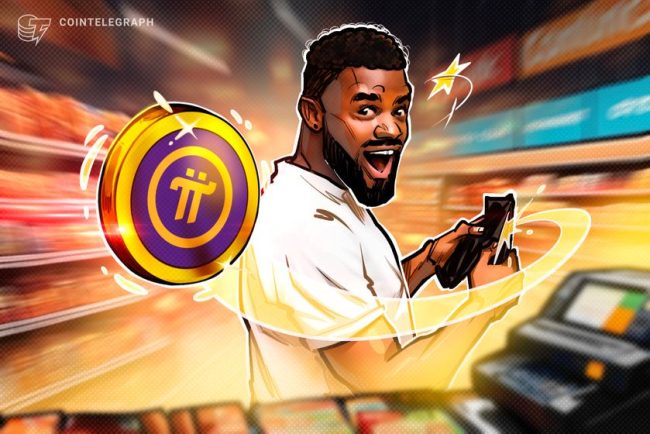
Can you really buy anything with Pi coin? Find out here!
Key takeaways Pi coin finally went live on open mainnet in February 2025, unlocking real-world use cases after years in closed beta. You can spend Pi coin, but mostly within P2P communities and KYC-verified Pi apps — mainstream adoption is still in its early stages. […]
Analysis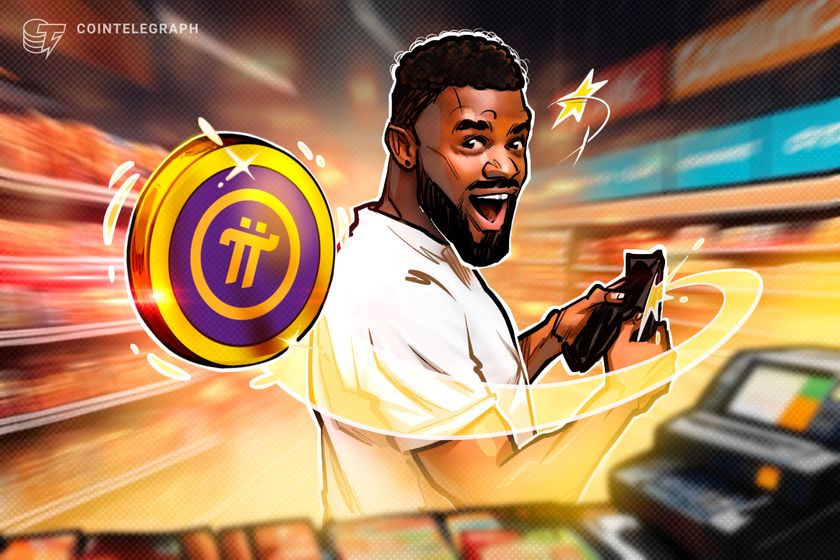

Key takeaways
-
Pi coin finally went live on open mainnet in February 2025, unlocking real-world use cases after years in closed beta.
-
You can spend Pi coin, but mostly within P2P communities and KYC-verified Pi apps — mainstream adoption is still in its early stages.
-
Pi is now tradable on several CEXs, such as OKX, Bitget and MEXC, but Binance still hasn’t listed it despite 2 million+ user voters lobbying for the listing.
-
Merchant adoption is growing slowly, with real goods and services being exchanged for Pi in localized markets and app-based ecosystems.
Pi coin finally went live on open mainnet in February 2025, unlocking real-world use cases after years in closed beta.
You can spend Pi coin, but mostly within P2P communities and KYC-verified Pi apps — mainstream adoption is still in its early stages.
Pi is now tradable on several CEXs, such as OKX, Bitget and MEXC, but Binance still hasn’t listed it despite 2 million+ user voters lobbying for the listing.
Merchant adoption is growing slowly, with real goods and services being exchanged for Pi in localized markets and app-based ecosystems.
Often described as a crypto for the people, Pi is a decentralized project that runs without the need for GPUs or gas fees. But five years since its closed mainnet launch in 2021, the million-dollar question still hangs in the air: Can you actually buy anything with Pi coin in 2025?
Let’s dive into the Pi Network’s real-world usability and answer what every Pi miner and curious crypto observer is wondering: Does Pi coin work in real life, or is it still just theoretical digital dust?
What is Pi coin, and what’s driving the attention around it in 2025?
Launched in March 2019 by a trio of Stanford Ph.D.s — Nicolas Kokkalis, Chengdiao Fan and Vincent McPhillip — the Pi Network set out to solve one of crypto’s core problems: accessibility.
Unlike Bitcoin or Ethereum, which require specialized hardware to mine, Pi coin was designed to be mined directly from a smartphone, without draining battery or data. The idea? Democratize crypto from the palm of your hand.
The Pi Network quickly went viral, spreading through invitation-only mining that created a sense of exclusivity and social virality. By 2021, the app had surpassed 20 million engaged users, or “Pioneers,” and by late 2023, that number had reportedly hit 47 million, making it one of the largest pre-mainnet crypto communities in the world.
Here’s a quick timeline of key moments:
-
March 2019: The Pi Network launches a beta version of its app on Android and iOS.
-
2020–2021: User growth accelerates through referrals; Pi phases move toward testnet.
-
December 2021: Closed mainnet goes live; Pi transactions remain within the ecosystem.
-
2022–2024: Over 100 Pi apps are built for testing in the closed economy.
-
February 2025: Pi Network officially launches its open mainnet, enabling blockchain interaction with the outside world.
This long-awaited mainnet move opened the doors for Pi (PI) coin to be listed on centralized exchanges (CEXs) and used outside its sandbox — finally bringing the project closer to its goal of becoming a real digital currency for everyday use.
From an ambitious student project to one of the most downloaded crypto apps ever, Pi Network’s journey has been anything but ordinary. But now that the tech is live and tradable, the big question is: Can you actually use Pi coin to buy things?
Did you know? Over 2 million users voted for Binance to list Pi coin — and yet, Binance has remained completely silent. Despite Pi Network boasting 47 million users and a fully launched mainnet, the world’s biggest exchange hasn’t budged. Why? Some say it’s a lack of decentralization. Others point to the controlled KYC rollout. Either way, it’s a reminder that in crypto, even a viral army can’t force the gatekeepers to open the doors.
Where can you buy Pi coin in 2025?
Following the launch of Pi Network’s open mainnet in February 2025, Pi coin has become available for trading on several cryptocurrency exchanges. As of April 2025, Pi coin is listed on the following exchanges:
-
OKX: One of the first to list PI, offering trading pairs such as PI/USDT.
-
Bitget: Provides PI trading with liquidity and user-friendly interfaces.
-
MEXC: Another early adopter, supporting PI trading pairs.
-
BitMart: Supports PI trading, though some listings may be IOUs.
-
HTX (formerly Huobi): Has listed PI, though it’s based on IOU listings.
Despite community efforts, including over 2 million votes in favor, Binance has not listed Pi coin as of April 2025. Concerns over blockchain compatibility, transparency and regulatory issues have been touted as reasons for the hesitation.
Did you know? Many Pi coin listings on exchanges are actually IOUs, which is not the real deal. These “I Owe You” tokens are speculative placeholders that aren’t backed by mainnet Pi, meaning you can’t withdraw or use them within the Pi Network ecosystem. It’s like trading a movie ticket for a film that hasn’t even premiered yet. Always check whether you’re buying the actual PI token or just a promise.
What can you actually buy with Pi coin?
Here’s where things get real (or not so real). While you might not be buying a Tesla with Pi (yet), the Pi community has been documenting purchases such as:
-
T-shirts, mugs and phone accessories
-
Freelance graphic design services
-
Basic electronics and gadgets
-
Food, drinks and small restaurant meals (in localized Pi events)
-
Handmade crafts and collectibles.
The catch? Most of these transactions happen via social media groups, Telegram chats or Pi’s own ecosystem apps such as Pi Browser and Pi Chat. These platforms act as informal marketplaces, often relying on trust and reputation rather than formal escrow systems.
So, while Pi isn’t quite ready for prime time in major retail environments, it is functioning — in a grassroots, community-driven way. Think of it more as a barter system with crypto flair than a fully integrated payment network. For now, at least.
Pi Network merchant list — fact or fiction?
If you search “Pi coin accepted stores” on Google, hoping for a list of your favorite retailers, you’ll be disappointed.
There is no official Pi Network merchant list that guarantees where Pi is accepted. Instead, adoption is grassroots and highly localized. One group of Pi Pioneers in Indonesia might be able to buy food with Pi, while another in Vietnam uses it for mobile data top-ups. But it’s hard to track, standardize or verify.
Merchant adoption is still early — but gaining traction.
Now that Pi Network’s open mainnet is live, the conversation is no longer about “if” Pi will integrate with the broader crypto ecosystem — it’s about how fast it can onboard real merchants and use cases.
One promising trend is the rise of Know Your Customer (KYC)-verified Pi apps, platforms that require users and businesses to complete identity verification before participating in the Pi economy. This layer of trust helps Pi Network build a more legitimate commercial environment, where merchants feel more confident accepting Pi coin as payment.
In the months following the open mainnet launch, Pi Network’s developers and community have focused on scaling real-world integrations, which include:
-
Local businesses in countries such as Nigeria, Vietnam, Indonesia and the Philippines accept Pi for goods and services.
-
Pi Chain Mall and other marketplaces are enabling digital commerce in Pi.
-
Third-party integrations are being tested to connect Pi with decentralized finance (DeFi) protocols, crosschain bridges and non-fungible token (NFT) platforms.
-
Pi Browser and Pi Apps allow decentralized application (DApp) developers to launch new payment-enabled services using mainnet Pi.
With over 100 Pi apps already built during the testnet phase — and a global army of KYC-verified users — Pi Network now has the tools to grow a real, scalable economy. Whether that turns into a bustling merchant network or a niche payment layer depends on what the community builds next.
With that said, there’s growing interest in onboarding merchants through KYC-verified Pi apps, hinting at a slow but potentially scalable adoption model.
Now with the open mainnet live, Pi is also expected to launch integrated DeFi protocols, decentralized exchanges (DEXs) and NFT marketplaces. If these integrations succeed, serious use cases beyond the Pi bubble could be unlocked.
Did you know? During PiFest 2025, over 1.8 million users engaged in transactions using Pi coin across 58,000 active merchants worldwide. This event showcased Pi Network’s growing real-world adoption and its potential to facilitate everyday commerce.
Is Pi coin ready for real-world payments?
Let’s be honest: Pi coin isn’t a Visa killer at the moment. It’s not ready to power global commerce or even compete with Bitcoin in El Salvador. However, it serves as a testbed for what crypto payments might look like when driven by community trust rather than institutional backing.
-
Think of it less like a universal payment tool and more like a local barter system on crypto steroids.
-
If the Pi Network nails its open mainnet rollout and expands merchant onboarding with real compliance and liquidity support, 2025 could mark the moment Pi goes from playful experiment to actual contender.
Final verdict: Can you buy stuff with Pi coin?
Yes — but with limitations.
You can spend Pi coin, but only in select peer-to-peer (P2P) markets, community-driven stores or pilot programs run by Pi Pioneers. Most of it is still happening in closed circuits, with no large-scale merchant integration yet.
But is that really a problem?
Maybe not. After all, the early days of Bitcoin weren’t much different — experimental, niche and often dismissed.
Back then, buying a pizza with Bitcoin (BTC) was groundbreaking. Now, BTC sits in exchange-traded fund (ETF) portfolios and corporate treasuries.
Whether Pi Network breaks through or fades into obscurity depends on what happens next: regulatory clarity and whether the network can scale beyond its internal community.
Believer or skeptic, one thing’s certain: The real-world test of the Pi Network economy is just getting started — and the world is watching.

How to read a stablecoin attestation report and why it matters
Key takeaways Stablecoin attestation reports provide third-party verification that each token is backed by real-world assets like cash and US Treasurys. Attestation ≠ audit: Attestations are point-in-time checks, not deep financial audits, so users should still perform broader due diligence. Not all tokens are redeemable. […]
Analysis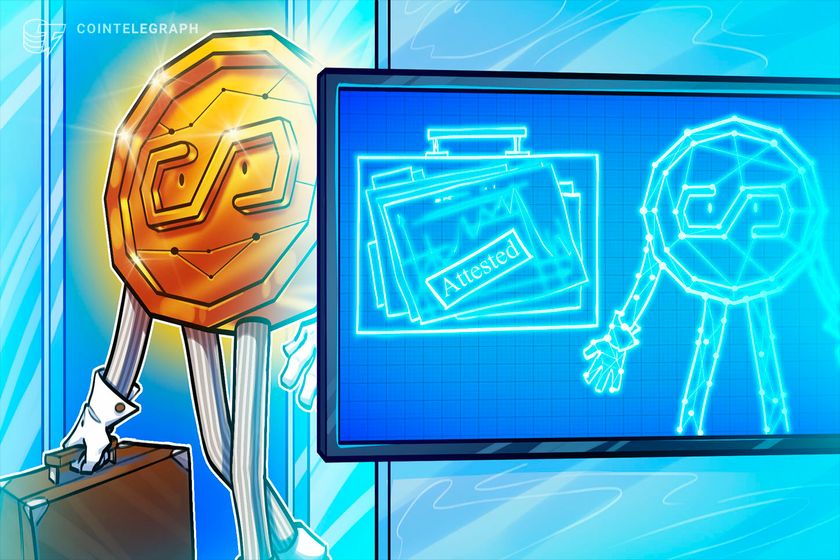

Key takeaways
-
Stablecoin attestation reports provide third-party verification that each token is backed by real-world assets like cash and US Treasurys.
-
Attestation ≠ audit: Attestations are point-in-time checks, not deep financial audits, so users should still perform broader due diligence.
-
Not all tokens are redeemable. Time-locked, test or frozen tokens are excluded from reserve calculations to reflect only actively circulating coins.
-
USDC sets an industry benchmark with regular third-party attestations, transparent reserve reporting and compliance with MiCA regulations.
Stablecoin attestation reports provide third-party verification that each token is backed by real-world assets like cash and US Treasurys.
Attestation ≠ audit: Attestations are point-in-time checks, not deep financial audits, so users should still perform broader due diligence.
Not all tokens are redeemable. Time-locked, test or frozen tokens are excluded from reserve calculations to reflect only actively circulating coins.
USDC sets an industry benchmark with regular third-party attestations, transparent reserve reporting and compliance with MiCA regulations.
Stablecoins play a crucial role in the digital asset ecosystem, bridging traditional fiat currencies and the decentralized world of cryptocurrencies.
How can you be confident that each stablecoin is backed by real-world assets? This is where stablecoin attestation reports come in.
Understanding how to read attestation reports is essential for anyone interacting with stablecoins like USDC (USDC) or Tether USDt (USDT).
This guide explains everything you need to know about stablecoin attestation reports, how they work and why they matter.
What is a stablecoin attestation report?
A stablecoin attestation report is a formal document issued by an independent third party — a certified public accountant (CPA) firm — that verifies whether the stablecoin issuer holds sufficient reserves to back the coins in circulation.
Unlike full audits, which evaluate broader financial systems and controls, attestations are narrower in scope. They confirm specific facts, like whether reserve balances match circulating supply at a single point in time.
Think of an attestation as a snapshot taken by accountants saying, “Yes, we’ve checked, and the money is there right now.”
It’s not as deep or wide as an audit, but it still builds trust.
For example, if a stablecoin issuer claims that each token is backed 1:1 by US dollars, an attestation report would provide evidence supporting that claim. Stablecoins like USDC regularly publish such reports to prove that their coins are fully backed, helping to build trust in their ecosystem.
Attestation reports are especially critical for investors and institutions that depend on stablecoins for cross-border settlements, collateral in lending protocols and participation in decentralized finance (DeFi) applications. Without confidence in the reserves’ authenticity, the stablecoin system risks collapse, which can impact the broader crypto market.
Purpose of stablecoin attestations: Why transparency matters?
Transparency is essential in the crypto space, especially for stablecoins, which serve as a medium of exchange, a store of value and collateral on DeFi platforms. Attestation reports offer a window into a stablecoin issuer’s reserves and disclosure practices, allowing users, regulators and investors to evaluate whether the issuer is operating responsibly.
Issuers like Circle, the company behind USDC, publish attestation reports to demonstrate compliance with regulatory expectations and assure users that the coins they hold are not only stable in name but also in substance. In doing so, they promote stablecoin investor safety and support market integrity.
This transparency builds the foundation for regulatory trust and helps attract traditional financial institutions into the space. It also aligns with broader industry goals for increasing stablecoin compliance, particularly as governments worldwide explore stablecoin-specific regulations.
Who conducts the attestation?
Stablecoin attestation reports are prepared by independent accounting firms. For instance, Circle’s USDC attestation reports are conducted by Deloitte (as of April 13, 2025), a leading global audit and advisory firm. These firms follow professional standards set by bodies like the AICPA (American Institute of Certified Public Accountants).
Independent attestors are essential because they remove conflicts of interest. Having a third-party review reserves ensures that the information is unbiased, credible and aligned with global assurance standards.
AICPA’s 2025 criteria: Standardizing stablecoin attestations
In response to growing concerns over inconsistent stablecoin disclosures, the AICPA introduced the 2025 Criteria for Stablecoin Reporting, a standardized framework for fiat-pegged, asset-backed tokens.
These criteria define how stablecoin issuers should present and disclose three key areas:
-
Redeemable tokens outstanding.
-
The availability and composition of redemption assets.
-
The comparison between the two.
What makes the 2025 Criteria important is its emphasis on transparency and comparability. For example, token issuers must clearly define redeemable versus nonredeemable tokens (such as time-locked or test tokens), identify where and how reserves are held and disclose any material legal or operational risks affecting redemption.
By aligning attestation reports with this framework, accounting firms ensure that evaluations are conducted using suitable, objective and measurable criteria, a key requirement under US attestation standards. This gives investors, regulators and DeFi users a more consistent and reliable basis for evaluating stablecoin solvency and trustworthiness.
As adoption grows, the 2025 Criteria may become the industry benchmark, especially as regulatory bodies increasingly rely on standardized reporting to assess stablecoin risks and enforce compliance.
Did you know? Not all stablecoins in circulation are redeemable. Some, like time-locked tokens, are temporarily restricted and can’t be accessed until a specific date. Others, known as test tokens, are used only for internal system testing and are never meant to be redeemed. These tokens are excluded from reserve calculations in attestation reports to ensure an accurate picture of what’s backing user-accessible stablecoins.
Behind the peg: How to read a stablecoin report and spot real backing
Reading a stablecoin attestation report isn’t just about scanning numbers. It’s about knowing whether the stablecoin you’re holding is backed.
Here’s how to break it down step by step and spot what really matters:
-
Check the report date: Attestations are point-in-time reviews. Look for the exact date the report covers (e.g., Feb. 28, 2025). It confirms reserves on that day only, not before or after.
-
Compare circulating supply vs reserves: Find the number of tokens in circulation and the total value of reserves. The reserves should be equal to or greater than the supply. If not, that’s a red flag.
-
Look at what backs the reserves: Reserves should be held in safe, liquid assets like US Treasurys or cash in regulated financial institutions. Watch out for risky or vague asset descriptions.
-
Review custodian and asset details: Check who’s holding the funds (e.g., major banks or money market funds) and where they’re stored. Remember, reputable custodians add credibility.
-
Understand the methodology: The report should explain how the review was conducted, what data was verified, what systems were used and which standards (like AICPA) were followed.
-
Identify excluded tokens: Some tokens, like test tokens or time-locked tokens, are excluded from circulation counts. Look for notes explaining these exceptions.
-
Check who performed the attestation: An independent and recognized accounting firm (like Deloitte or Grant Thornton) adds legitimacy. If the attestor isn’t disclosed or independent, treat with caution. A signed statement from the accounting firm verifies the accuracy of the issuer’s claims.
Investors may also look for supplementary notes within the report, such as jurisdiction of reserve accounts, legal encumbrances on assets or clarification of valuation techniques. All these elements help paint a fuller picture of risk and reliability.
What the February 2025 USDC attestation report reveals
In March 2025, Circle released its latest reserve attestation report, offering a transparent look at what backs one of the most widely used digital dollars in crypto.
The report was independently examined by Deloitte, one of the “Big Four” global accounting firms. Deloitte confirmed that, as of both Feb. 4 and Feb. 28, 2025, the fair value of Circle’s reserves was equal to or greater than the amount of USDC in circulation.
The below snapshot from Circle’s February 2025 attestation report shows that the amount of USDC in circulation stood at $54.95 billion on Feb. 4 and $56.28 billion on Feb. 28. The fair value of reserves held to back USDC exceeded these figures, totaling $55.01 billion and $56.35 billion on the respective dates.
What’s in the reserves?
Circle holds its USDC reserves mainly in:
-
US Treasury securities
-
Treasury repurchase agreements
-
Cash at regulated financial institutions
These assets are kept separate from Circle’s corporate funds and are managed through the Circle Reserve Fund, a regulated money market fund.
The attestation also accounts for technical factors like “access-denied” tokens (e.g., frozen due to legal or compliance reasons) and tokens not yet issued, ensuring an accurate measure of circulating USDC.
For users, this means greater confidence that every USDC token is backed by high-quality, liquid assets, just like the company claims.
Did you know? As of Feb. 4 and Feb. 28, 2025, 993,225 USDC remained permanently frozen on deprecated blockchains, including the FLOW blockchain. These tokens are excluded from the official USDC in circulation totals reported by Circle.
How are stablecoin reserves verified?
Stablecoin attestation reports serve as a form of proof of reserves, providing independent confirmation that a stablecoin issuer holds enough assets to back the tokens in circulation. The verification process typically involves several key steps:
-
Reviewing bank statements and financial records.
-
Confirming cash balances held by custodians.
-
Cross-checking reported reserves with third-party documentation.
-
Comparing the supply of stablecoins onchain with the reported reserve amount.
As mentioned, these procedures are carried out by independent accounting firms and are designed to ensure that the reserves are not only sufficient but also liquid and accessible.
Some attestation reports also include details on the tools and technologies used to maintain transparency, such as real-time API integrations with custodians and onchain monitoring systems. These advancements are helping bridge the gap between traditional finance and blockchain, reinforcing trust through verifiable, tamper-resistant data.
What happens if reserves don’t match supply?
If an attestation report reveals that a stablecoin issuer does not hold sufficient reserves, the consequences can be severe. The issuer may face:
-
Regulatory scrutiny: Noncompliance with financial regulations.
-
Market sell-offs: A drop in user confidence may lead to mass redemptions.
-
Price instability: The stablecoin may lose its 1:1 peg.
These concerns highlight the need for regular, transparent crypto reserve reports. For instance, Tether has faced ongoing criticism for the lack of clarity surrounding its reserves, fueling demands for greater disclosure. This opacity has also led to Tether’s delisting in Europe under Markets in Crypto-Assets (MiCA) regulations as exchanges brace for stricter compliance requirements.
Lack of transparency can also invite speculation and misinformation, which can cause unnecessary panic in the markets. As a result, proactive disclosure is not just a best practice; it’s a business imperative for stablecoin issuers.
Limitations of stablecoin attestation reports
While attestation reports are crucial, they are not a cure-all. Here are some limitations:
-
Point-in-time snapshots: Reports only verify reserves on a specific date.
-
No forward-looking guarantees: Attestations don’t predict future solvency.
-
Limited operational insight: They typically don’t cover risks like hacking, mismanagement or liquidity issues.
For example, the latest USDC attestation (as discussed in this article) confirms full reserves as of Feb. 4 and Feb. 28, 2025, but it says nothing about what happens on March 1 or any day after. Users must understand these limitations and avoid assuming that attestation equals absolute safety.
This is why combining attestation reports with other forms of due diligence like reading legal disclaimers, following regulatory updates and tracking company behavior is key for responsible crypto participation.
Not just a report — A roadmap to trust in crypto
Reading a stablecoin attestation report is more than scanning numbers; it’s a key step in assessing the trustworthiness of a digital asset. By understanding how to read attestation reports, crypto users can make informed decisions, avoid unnecessary risks and support projects that prioritize stablecoin compliance and transparency.
With clearer frameworks from institutions like the AICPA and growing public pressure for stablecoin disclosure practices, the ecosystem is moving toward greater accountability. As regulators sharpen their focus and investors demand more visibility, learning to navigate crypto attestation reports will become an essential skill for all participants in the crypto economy.
Whether you’re a retail investor, developer or institutional player, mastering these reports helps protect your assets and support a more transparent and trustworthy crypto future.
This article does not contain investment advice or recommendations. Every investment and trading move involves risk, and readers should conduct their own research when making a decision.

How to build an AI crypto trading bot with custom GPTs
AI is transforming how people interact with financial markets, and cryptocurrency trading is no exception. With tools like OpenAI’s Custom GPTs, it is now possible for beginners and enthusiasts to create intelligent trading bots capable of analyzing data, generating signals and even executing trades. This […]
Analysis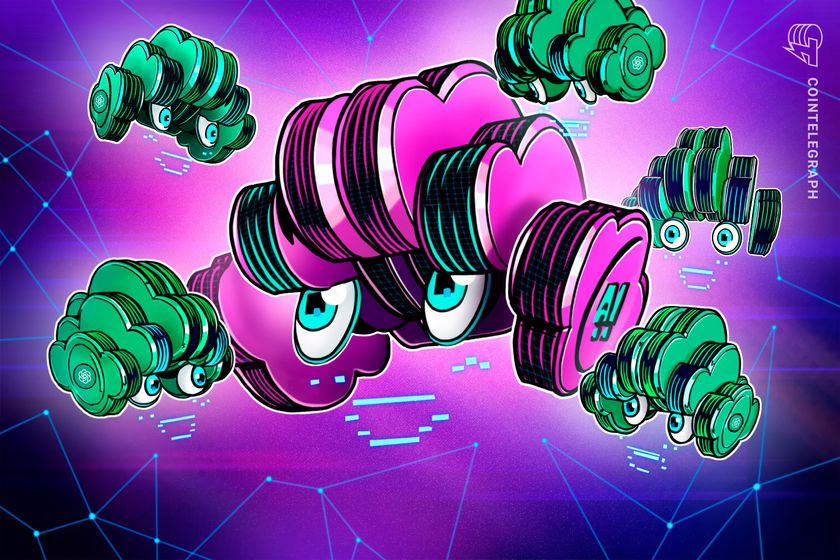

AI is transforming how people interact with financial markets, and cryptocurrency trading is no exception. With tools like OpenAI’s Custom GPTs, it is now possible for beginners and enthusiasts to create intelligent trading bots capable of analyzing data, generating signals and even executing trades.
This guide analyzes the fundamentals of building a beginner-friendly AI crypto trading bot using Custom GPTs. It covers setup, strategy design, coding, testing and important considerations for safety and success.
What is a custom GPT?
A custom GPT (generative pretrained transformer) is a personalized version of OpenAI’s ChatGPT. It can be trained to follow specific instructions, work with uploaded documents and assist with niche tasks, including crypto trading bot development.
These models can help automate tedious processes, generate and troubleshoot code, analyze technical indicators and even interpret crypto news or market sentiment, making them ideal companions for building algorithmic trading bots.
What you’ll need to get started
Before creating a trading bot, the following components are necessary:
-
OpenAI ChatGPT Plus subscription (for access to GPT-4 and Custom GPTs).
-
A crypto exchange account that offers API access (e.g., Coinbase, Binance, Kraken).
-
Basic knowledge of Python (or willingness to learn).
-
A paper trading environment to safely test strategies.
-
Optional: A VPS or cloud server to run the bot continuously.
Did you know? Python’s creator, Guido van Rossum, named the language after Monty Python’s Flying Circus, aiming for something fun and approachable.
Step-by-step guide to building an AI trading bot with custom GPTs
Whether you’re looking to generate trade signals, interpret news sentiment or automate strategy logic, the below step-by-step approach helps you learn the basics of combining AI with crypto trading.
With sample Python scripts and output examples, you’ll see how to connect a custom GPT to a trading system, generate trade signals and automate decisions using real-time market data.
Step 1: Define a simple trading strategy
Start by identifying a basic rule-based strategy that is easy to automate. Examples include:
-
Buy when Bitcoin’s (BTC) daily price drops by more than 3%.
-
Sell when RSI (relative strength index) exceeds 70.
-
Enter a long position after a bullish moving average convergence divergence (MACD) crossover.
-
Trade based on sentiment from recent crypto headlines.
Clear, rule-based logic is essential for creating effective code and minimizing confusion for your Custom GPT.
Step 2: Create a custom GPT
To build a personalized GPT model:
-
Visit chat.openai.com
-
Navigate to Explore GPTs > Create
-
Name the model (e.g., “Crypto Trading Assistant”)
-
In the instructions section, define its role clearly. For example:
“You are a Python developer specialized in crypto trading bots.”
“You understand technical analysis and crypto APIs.”
“You help generate and debug trading bot code.”
Optional: Upload exchange API documentation or trading strategy PDFs for additional context.
Step 3: Generate the trading bot code (with GPT’s help)
Use the custom GPT to help generate a Python script. For example, type:
“Write a basic Python script that connects to Binance using ccxt and buys BTC when RSI drops below 30. I am a beginner and don’t understand code much so I need a simple and short script please.”
The GPT can provide:
-
Code for connecting to the exchange via API.
-
Technical indicator calculations using libraries like ta or TA-lib.
-
Trading signal logic.
-
Sample buy/sell execution commands.
Python libraries commonly used for such tasks are:
-
ccxt for multi-exchange API support.
-
pandas for market data manipulation.
-
schedule or apscheduler for running timed tasks.
To begin, the user must install two Python libraries: ccxt for accessing the Binance API, and ta (technical analysis) for calculating the RSI. This can be done by running the following command in a terminal:
pip install ccxt ta
Next, the user should replace the placeholder API key and secret with their actual Binance API credentials. These can be generated from a Binance account dashboard. The script uses a five-minute candlestick chart to determine short-term RSI conditions.
Below is the full script:
====================================================================
import ccxt
import pandas as pd
import ta
# Your Binance API keys (use your own)
api_key = ‘YOUR_API_KEY’
api_secret = ‘YOUR_API_SECRET’
# Connect to Binance
exchange = ccxt.binance({
‘apiKey’: api_key,
‘secret’: api_secret,
‘enableRateLimit’: True,
})
# Get BTC/USDT 1h candles
bars = exchange.fetch_ohlcv(‘BTC/USDT’, timeframe=’1h’, limit=100)
df = pd.DataFrame(bars, columns=[‘timestamp’, ‘open’, ‘high’, ‘low’, ‘close’, ‘volume’])
# Calculate RSI
df[‘rsi’] = ta.momentum.RSIIndicator(df[‘close’], window=14).rsi()
# Check latest RSI value
latest_rsi = df[‘rsi’].iloc[-1]
print(f”Latest RSI: {latest_rsi}”)
# If RSI
if latest_rsi
order = exchange.create_market_buy_order(‘BTC/USDT’, 0.001)
print(“Buy order placed:”, order)
else:
print(“RSI not low enough to buy.”)
====================================================================
Please note that the above script is intended for illustration purposes. It does not include risk management features, error handling or safeguards against rapid trading. Beginners should test this code in a simulated environment or on Binance’s testnet before considering any use with real funds.
Also, the above code uses market orders, which execute immediately at the current price and only run once. For continuous trading, you’d put it in a loop or scheduler.
Images below show what the sample output would look like:
The sample output shows how the trading bot reacts to market conditions using the RSI indicator. When the RSI drops below 30, as seen with “Latest RSI: 27.46,” it indicates the market may be oversold, prompting the bot to place a market buy order. The order details confirm a successful trade with 0.001 BTC purchased.
If the RSI is higher, such as “41.87,” the bot prints “RSI not low enough to buy,” meaning no trade is made. This logic helps automate entry decisions, but the script has limitations like no sell condition, no continuous monitoring and no real-time risk management features, as explained previously.
Step 4: Implement risk management
Risk control is a critical component of any automated trading strategy. Ensure your bot includes:
-
Stop-loss and take-profit mechanisms.
-
Position size limits to avoid overexposure.
-
Rate-limiting or cooldown periods between trades.
-
Capital allocation controls, such as only risking 1–2% of total capital per trade.
Prompt your GPT with instructions like:
“Add a stop-loss to the RSI trading bot at 5% below the entry price.”
Step 5: Test in a paper trading environment
Never deploy untested bots with real capital. Most exchanges offer testnets or sandbox environments where trades can be simulated safely.
Alternatives include:
-
Running simulations on historical data (backtesting).
-
Logging “paper trades” to a file instead of executing real trades.
-
Testing ensures that logic is sound, risk is controlled and the bot performs as expected under various conditions.
Step 6: Deploy the bot for live trading (Optional)
Once the bot has passed paper trading tests:
-
Replace test API keys: First, replace your test API keys with live API keys from your chosen exchange’s account. These keys allow the bot to access your real trading account. To do this, log in to exchange, go to the API management section and create a new set of API keys. Copy the API key and secret into your script. It is crucial to handle these keys securely and avoid sharing them or including them in public code.
-
Set up secure API permissions (disable withdrawals): Adjust the security settings for your API keys. Make sure that only the permissions you need are enabled. For example, enable only “spot and margin trading” and disable permissions like “withdrawals” to reduce the risk of unauthorized fund transfers. Exchanges like Binance also allow you to limit API access to specific IP addresses, which adds another layer of protection.
-
Host the bot on a cloud server: If you want the bot to trade continuously without relying on your personal computer, you’ll need to host it on a cloud server. This means running the script on a virtual machine that stays online 24/7. Services like Amazon Web Services (AWS), DigitalOcean or PythonAnywhere provide this functionality. Among these, PythonAnywhere is often the easiest to set up for beginners, as it supports running Python scripts directly in a web interface.
Still, always start small and monitor the bot regularly. Mistakes or market changes can result in losses, so careful setup and ongoing supervision are essential.
Did you know? Exposed API keys are a top cause of crypto theft. Always store them in environment variables — not inside your code.
Ready-made bot templates (starter logic)
The templates below are basic strategy ideas that beginners can easily understand. They show the core logic behind when a bot should buy, like “buy when RSI is below 30.”
Even if you’re new to coding, you can take these simple ideas and ask your Custom GPT to turn them into full, working Python scripts. GPT can help you write, explain and improve the code, so you don’t need to be a developer to get started.
In addition, here is a simple checklist for building and testing a crypto trading bot using the RSI strategy:
Just choose your trading strategy, describe what you want, and let GPT do the heavy lifting, including backtesting, live trading or multi-coin support.
-
RSI strategy bot (buy Low RSI)
Logic: Buy BTC when RSI drops below 30 (oversold).
if rsi
place_buy_order()
-
Used for: Momentum reversal strategies.
-
Tools: ta library for RSI.
2. MACD crossover bot
Logic: Buy when MACD line crosses above signal line.
if macd > signal and previous_macd
place_buy_order()
-
Used for: Trend-following and swing trading.
-
Tools: ta.trend.MACD or TA-Lib.
3. News sentiment bot
Logic: Use AI (Custom GPT) to scan headlines for bullish/bearish sentiment.
if “bullish” in sentiment_analysis(latest_headlines):
place_buy_order()
Used for: Reacting to market-moving news or tweets.
Tools: News APIs + GPT sentiment classifier.
Risks concerning AI-powered trading bots
While trading bots can be powerful tools, they also come with serious risks:
-
Market volatility: Sudden price swings can lead to unexpected losses.
-
API errors or rate limits: Improper handling can cause the bot to miss trades or place incorrect orders.
-
Bugs in code: A single logic error can result in repeated losses or account liquidation.
-
Security vulnerabilities: Storing API keys insecurely can expose your funds.
-
Overfitting: Bots tuned to perform well in backtests may fail in live conditions.
Always start with small amounts, use strong risk management and continuously monitor bot behavior. While AI can offer powerful support, it’s crucial to respect the risks involved. A successful trading bot combines intelligent strategy, responsible execution and ongoing learning.
Build slowly, test carefully and use your Custom GPT not just as a tool — but also as a mentor.
This article does not contain investment advice or recommendations. Every investment and trading move involves risk, and readers should conduct their own research when making a decision.


















